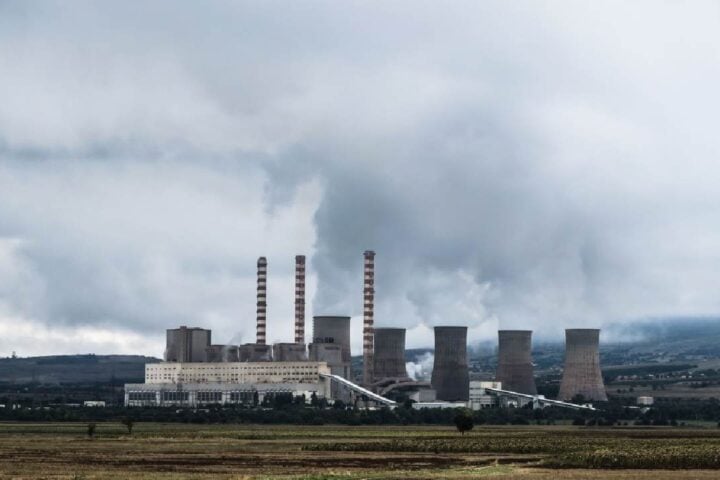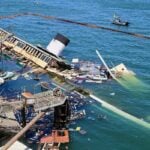Ammonia’s Potential in Decarbonization
The Global Maritime Forum’s latest analysis predicts that the cost difference between operating ships on zero-emission ammonia and traditional fuel could vanish by 2030, with potential realization as early as 2026. Ammonia is emerging as a pivotal solution for the shipping sector’s decarbonization due to its scalability and suitability for long-haul routes. However, current ammonia-powered gas carriers come with a heftier price tag compared to their conventional counterparts.
The NoGAPS Project and Its Aims
The Nordic Green Ammonia Powered Ships (NoGAPS) project, backed by Nordic Innovation, delves into strategies to address these cost challenges. Their study centers on the commercialization of vessels like M/S NoGAPS, an ammonia-powered carrier designed for the US Gulf-Northwestern Europe route, which has received “Approval in Principle” from DNV. “Since 2020, the NoGAPS project has united industry leaders to advance an ammonia-powered gas tanker concept towards real-world application,” states Jesse Fahnestock, Project Director at the Global Maritime Forum.

Financial Implications and Collaborations
The financial implications of constructing an ammonia-powered carrier are projected to exceed those of a standard gas carrier by a staggering 50 to 130% in the upcoming years. This estimate stems from the Global Maritime Forum’s interviews with stakeholders spanning banks, funds, private equity firms, and more. Notably, the NoGAPS initiative collaborates with giants like Mærsk Mc-Kinney Møller Center for Zero Carbon Shipping, Yara International, and MAN Energy Solutions.
Project Phases and Goals
The project’s first phase, from 2020 to 2021, concentrated on surmounting obstacles to adopting ammonia as a maritime fuel, aiming to establish a proof of concept. Following this, Breeze Ship Design was awarded the design contract for the project’s second phase, which will run until 2025. The overarching goal is to craft a ship design that could pave the way for the construction of a vessel optimized for commercial operations in North Atlantic and Northwestern European waters.
Addressing Commercial Risks
The recent report underscores the significant commercial risks for shipowners and lenders in adopting ammonia as fuel due to the associated high costs. However, the study remains optimistic, suggesting that appropriate financing will be accessible for pioneering ammonia-powered vessels. The report introduces four synergistic measures to address the financial challenges: optimizing dual-fuel vessel design, securing competitive financing arrangements, leveraging public sector de-risking strategies, and establishing premium long-term charters with reputable entities.
Financing Options and Support
Two financing options stand out for M/S NoGAPS: a traditional bank loan combined with equity or a leasing arrangement where the shipowner “rents” the vessel. Crucially, these options would benefit from de-risking strategies to distribute costs and risks more equitably. Export credit agency (ECA) support, either through loan guarantees or direct concessional lending, will be pivotal in enhancing lender participation. However, the study indicates a global shortfall in the CAPEX support available for trailblazers in this space. Potential funding opportunities for M/S NoGAPS might come from Norway’s Enova and the EU’s research, development, and demonstration (RD&D) schemes.

Challenges and Policy Advancements
The report emphasizes that long-term chartering agreements will be a formidable challenge for early ammonia-powered vessels due to the elevated operational costs, especially fuel. If M/S NoGAPS opts for US ammonia, the cost gap could be bridged by 2026, with blue and green ammonia reaching a mere 2% and 3% premium respectively. Policy advancements, like the US Inflation Reduction Act and EU Fit for 55 package, could decrease NoGAPS’ costs by approximately 20% and 10% respectively. While these policies bolster the business case, a blend of public sector and industry initiatives is essential to close the cost gap within this decade.
Future Pathways and Analysis Conclusion
The report outlines three potential pathways for M/S NoGAPS, ranging from bunkering in the US to leveraging cost reduction strategies and transitioning between blue and green ammonia. The analysis paints a hopeful picture for commercializing M/S NoGAPS, suggesting that with strategic actions and public sector support, the project could captivate lender interest. “The project has a robust strategic business case, with the potential to be among the first clean ammonia-powered vessels deployed internationally,” the report concludes.
Next Steps and Broader
Implications Immediate next steps for the project partners include optimizing the fuel strategy based on the Inflation Reduction Act and exploring CAPEX and fuel subsidy requirements. The findings have broader implications, emphasizing the need for robust policies that are economically viable for the entire shipping sector. Collaborative agreements like the Inflation Reduction Act and Fit for 55 package between the US and Europe are laying the groundwork for this policy framework. National and regional policies will be instrumental in propelling zero-emission shipping to the forefront.

Opportunities in the Nordic Region
The Nordic region presents numerous opportunities in technological innovation for zero-emission shipping. Policymakers in the Nordic region are urged to accelerate policy development to bridge the cost gap for clean ammonia and enhance its availability. The report concludes that ammonia-powered vessels could be commercially viable by 2026 with aggressive strategies and extensive subsidy utilization. Engine manufacturers like MAN and Wartsila are making strides in ammonia as a marine fuel, with successful combustion tests and fuel supply system developments. However, the primary concern remains the elevated costs associated with ammonia-powered ships and their operations.
Final Remarks
The NoGAPS project’s second phase has not only produced a detailed ship design but also feasible commercialization pathways. “We hope this boosts confidence amongst charter parties and investors to take steps towards the realization of M/S NoGAPS and other ammonia-powered vessels,” reiterates Jesse Fahnestock. The collective efforts of industry leaders, combined with strategic policy measures, could revolutionize the maritime sector, steering it towards a sustainable future.


















